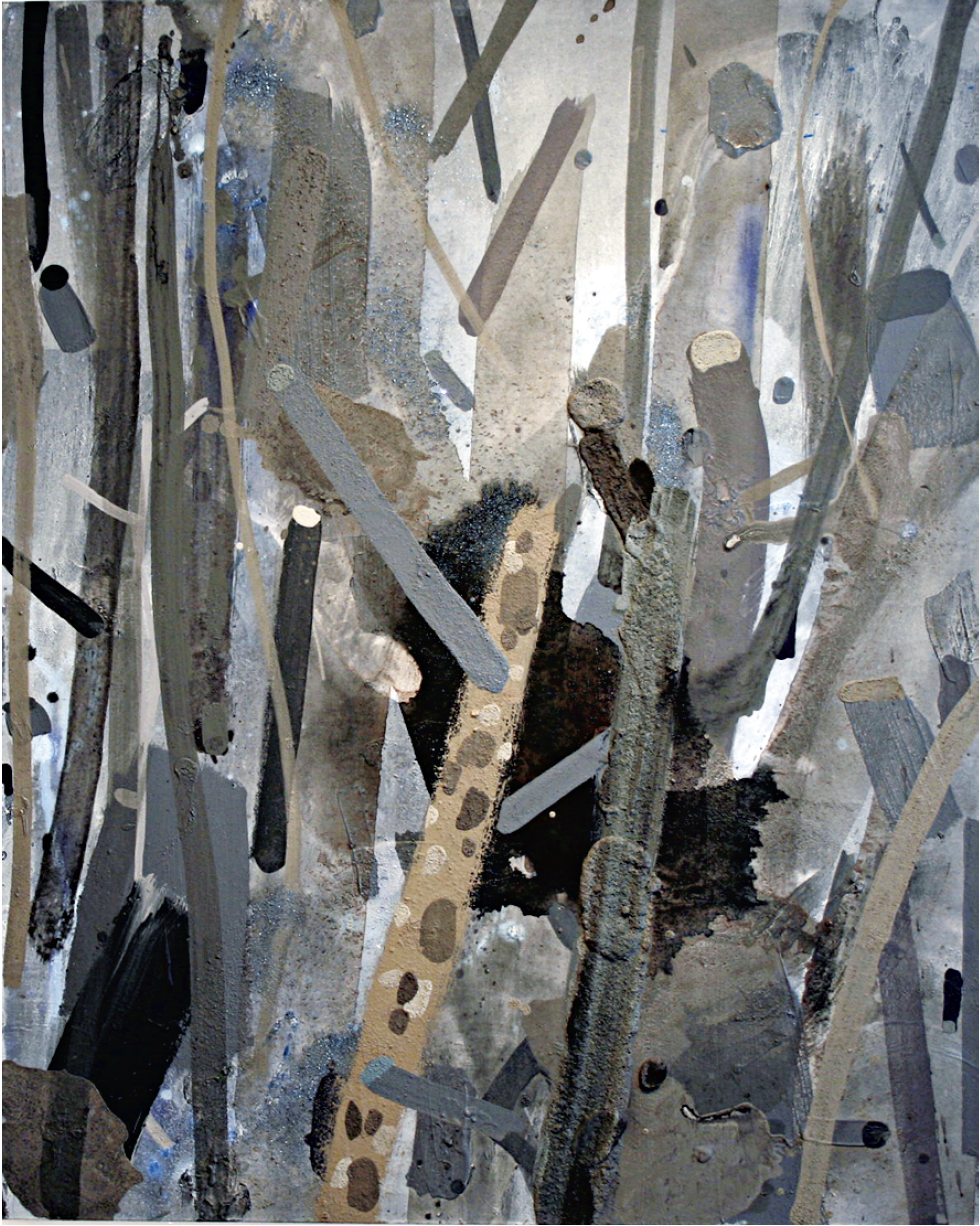Benjamin King
It says something about the current state of the world that aesthetic ideas that a few years back seemed anachronistic—even taboo in some circles—can muscle their way back into the good graces of properly sanctioned aesthetic practice. Not to mention the means: discovered by his gallery in Montreal in some Twitter-feed serendipity, Brooklyn-based Benjamin King’s current exhibition “White Sparkle” at galerie Laroche/Joncas is a panegyric to pure painting and a compelling examination of the meaning of “abstraction” in relation to it.
Early American Abstractionist Arthur Dove, painting at a time when trying to distill nature into the language of paint was still a central concern of the avant-garde, said that painting was a matter of “extraction, gravitation toward a certain direction and minding your own business.” King’s similar method of work—extracting nature into simple systems of shape, colour and texture while setting them within the linguistic rules of paint—is a surprising example of how an old approach can answer the pictorial conundrums of a Twitter generation seeking equilibrium between image and the pure play of paint.
King obviously sets parameters to allow his work to “gravitate” (or more literally drift) into compositional completion. Colour is restricted to small variants of value and hue. Shape is set in short, Milton Avery-esque notations that don’t distract from the composition. Texture is appropriately varied to allow a voice to each individual element. Then King lets it pile up.
In the appropriately titled Drifts, 2009, and in the title piece, White Sparkle, 2010, King shovels up forms to a blizzard pitch of shapes and blobs. In White Sparkle—ostensibly a snowscape—he starts with the barest essential of establishing landscape on a picture plane: he bisects it with a blue wash directly on bare canvas. There’s sky. Thereafter, poured marks, patchy blobs, nubs of texture and muted Pac-Man-like shapes pile up on the bare canvas like a literal snowdrift.
Texture is as much in play as any other element in the scene—the use of sand or diatomaceous earth, interference paint and sparkle adds to the individual character of each mark. The application of every element is of equal significance: the brushed, the poured, the dribbled and scumbled. There is intention and Zen-like deliberation in the act of putting paint to canvas, despite the apparent randomness of application. What could be an almost pretentious nonchalance in the appearance of the composition is a carefully considered piling up of the paint.

Benjamin King, Untitled, 2010, acrylic, sand and glitter on canvas, 49 x 32.25”. Courtesy Laroche/Joncas Gallery, Montreal.
The palette is as restrained and subtle as a Charles Gagnon titanium-ridden paint-scape. Throughout the exhibition, one might be justified in concluding that it’s a shame King isn’t Canadian. He certainly gains great purchase from a wintery landscape that is ubiquitous for those north of the 49th, while many painters here start their careers shooting for an aesthetic street cred that more urbane idioms bring. “I bully and beg my way through these paintings,” King says in a statement on the Saatchi Online website. His intention echoes Dove’s, his early-century countryman, both in his selectively extractive use of nature and it’s application, as King says: “…to create approximations of seen things, then combine them in ways that have overlapping meaning.”
The paintings vividly become their own metaphors, whether in works with sparkling drifts of accumulated marks or his winter forest landscapes, where heavily impastoed stand-ins for tree trunks either accumulate occlusively, obscuring your view of the forest through the trees, or pile up like winter deadfall.
In Hey We’re All Deciduous Here, 2008, King’s initial draw to landscape as a possible staging ground to his later, more Ab-Ex-ish “bullying and begging” is apparent. It is still read mostly as a landscape. The bare tree trunks stand out less as slathers of paint than as imaged actors in a snow stage—and the title hints at the emergence of a more anthropomorphic approach to individual marks evidenced in later pieces.
From Not Exactly Happy, 2008, to a series of brilliant, untitled forest pieces from 2010, King works his way through a spare Gustonesque anthropomorphism into accumulations of individualized marks, approximating the unleashed accumulative anarchy of an unfettered nature: globs of sandy impasto are laid down upon grey/brown branches of acrylic sludge, thin brown washes thrown in for good measure. And if that weren’t enough, great suspended blobs of titanium snowflakes close enough to feel the chill burn.
King’s are deceptively simple paintings, and the comparison to both Guston and the early-century Dove is hard to avoid. He has a sharp eye for the rules of paint, not unlike Dove who said, “we cannot express the light in nature because we have not sun. We can only express the light we have in ourselves.” ❚
“White Sparkle” was exhibited at galerie Laroche/Joncas in Montreal from October 14 to November 13, 2010.
Cameron Skene is a Montreal-based painter, writer and curator whose writing has appeared in the Montreal Gazette, Canadian Art, among others.

